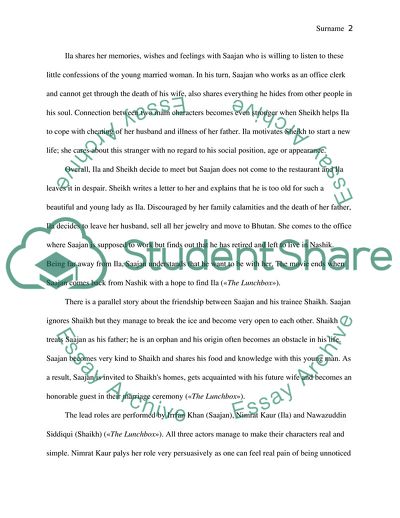Cite this document
(The Case of New Indian Cinematography in the Film The Lunchbox Movie Review Example | Topics and Well Written Essays - 1250 words, n.d.)
The Case of New Indian Cinematography in the Film The Lunchbox Movie Review Example | Topics and Well Written Essays - 1250 words. https://studentshare.org/visual-arts-film-studies/1849892-movie-review-the-lunch-box
The Case of New Indian Cinematography in the Film The Lunchbox Movie Review Example | Topics and Well Written Essays - 1250 words. https://studentshare.org/visual-arts-film-studies/1849892-movie-review-the-lunch-box
(The Case of New Indian Cinematography in the Film The Lunchbox Movie Review Example | Topics and Well Written Essays - 1250 Words)
The Case of New Indian Cinematography in the Film The Lunchbox Movie Review Example | Topics and Well Written Essays - 1250 Words. https://studentshare.org/visual-arts-film-studies/1849892-movie-review-the-lunch-box.
The Case of New Indian Cinematography in the Film The Lunchbox Movie Review Example | Topics and Well Written Essays - 1250 Words. https://studentshare.org/visual-arts-film-studies/1849892-movie-review-the-lunch-box.
“The Case of New Indian Cinematography in the Film The Lunchbox Movie Review Example | Topics and Well Written Essays - 1250 Words”. https://studentshare.org/visual-arts-film-studies/1849892-movie-review-the-lunch-box.


